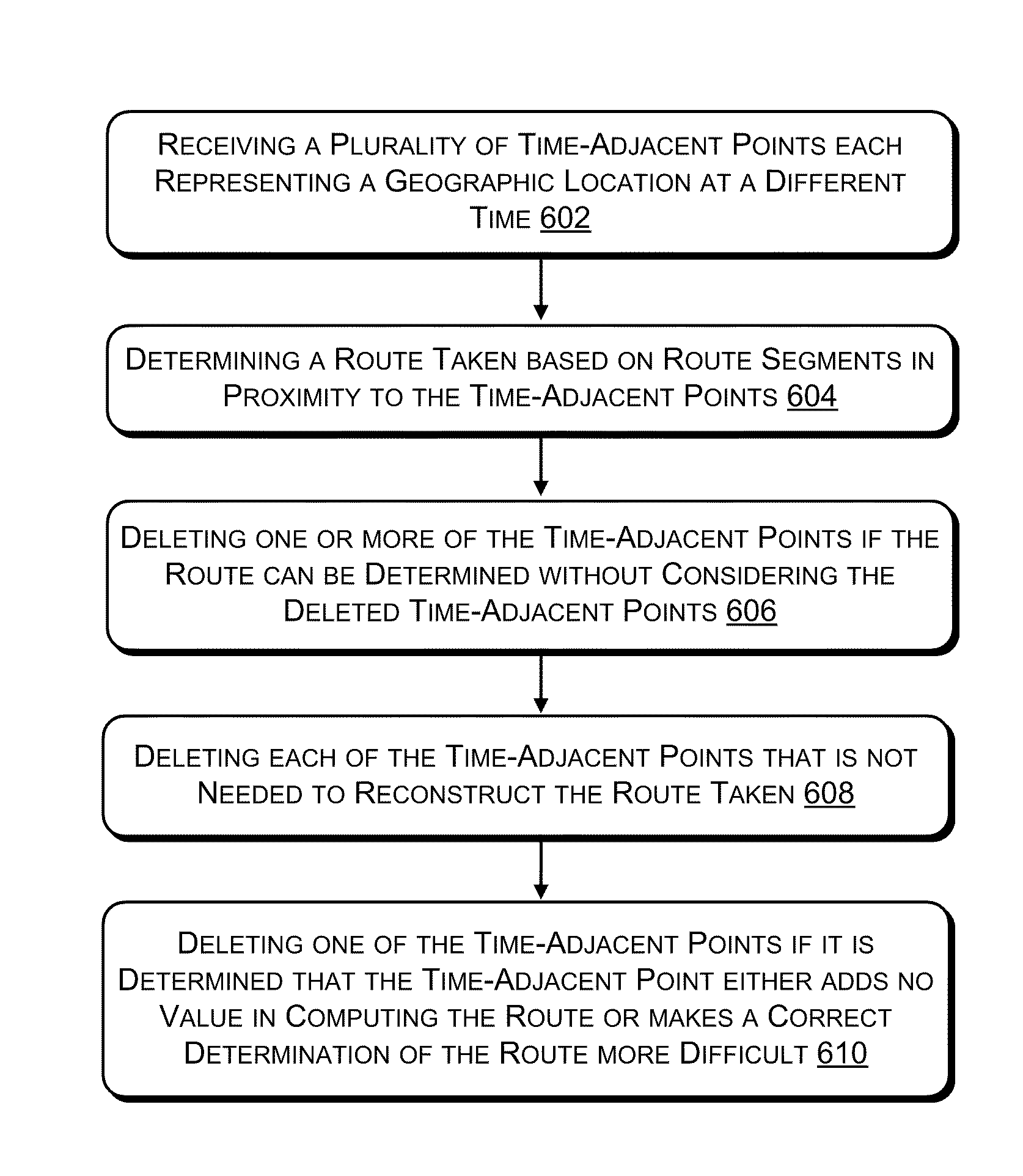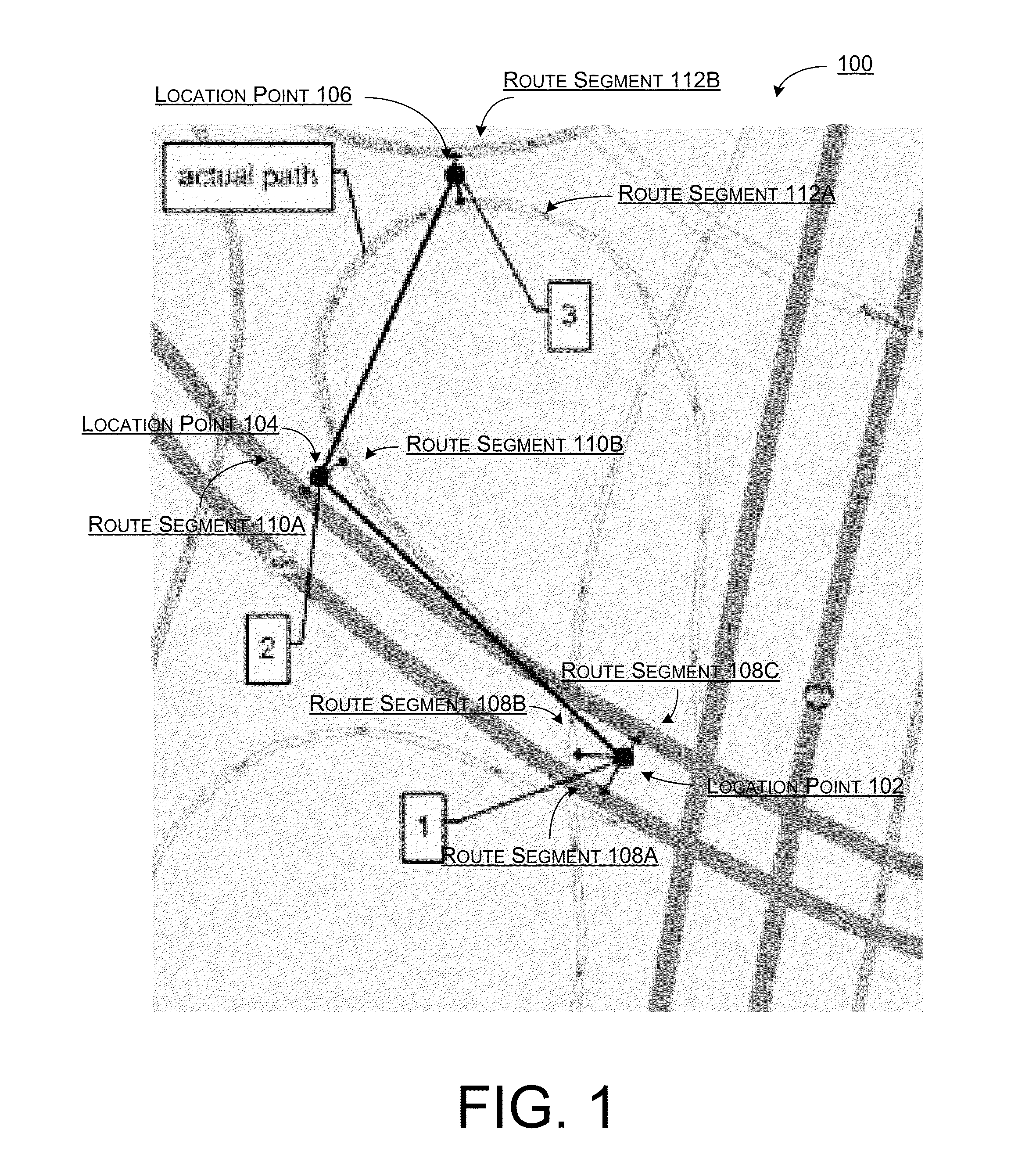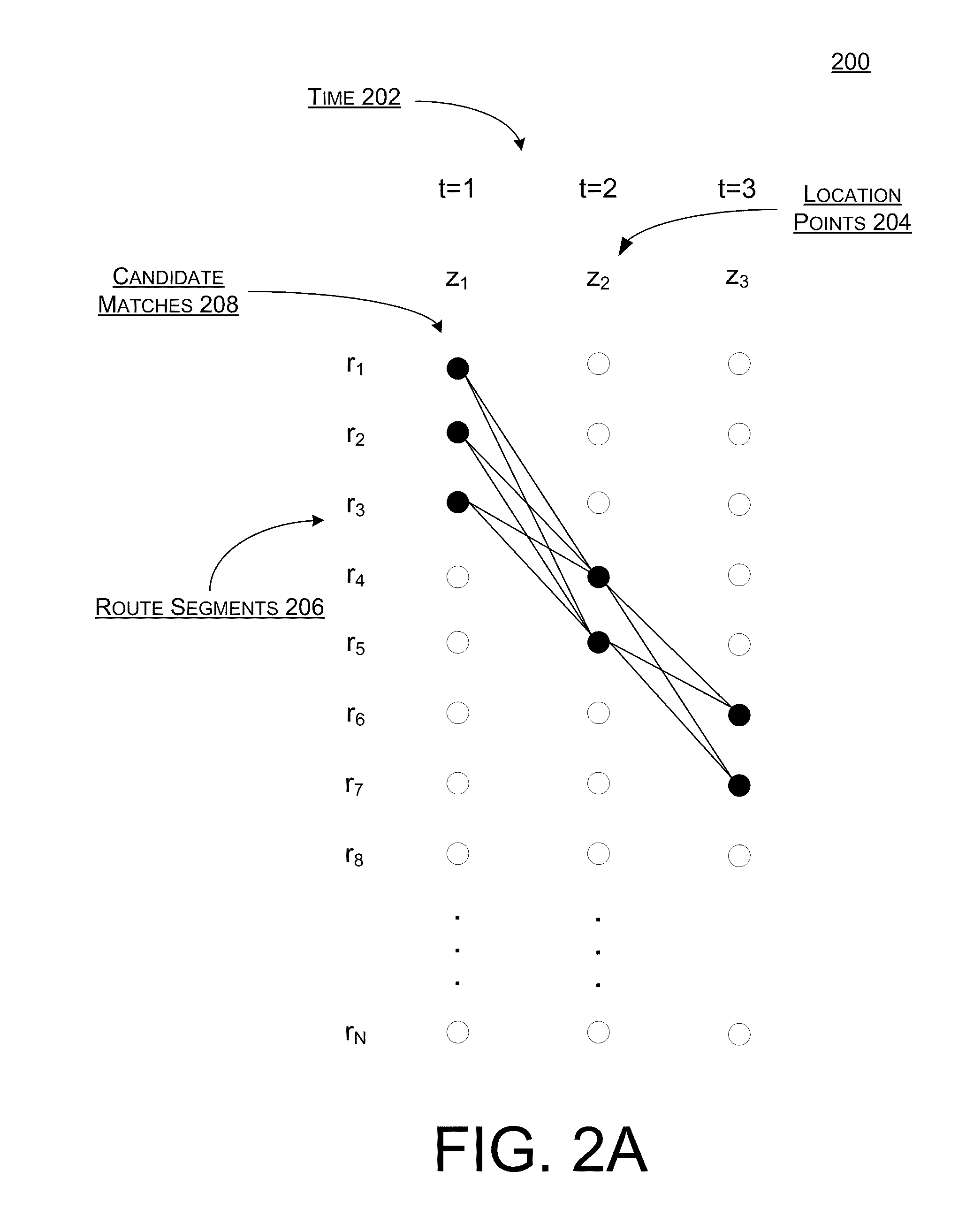Probabilistic Map Matching From A Plurality Of Observational And Contextual Factors
a technology of probabilistic map matching and contextual factors, applied in surveying, navigation, instruments, etc., can solve problems such as difficulty in ensuring that mobile positions identified via gps are being properly registered on a digital map, inaccurate road, path and/or building identification by the map matching method, and gps sensor errors
- Summary
- Abstract
- Description
- Claims
- Application Information
AI Technical Summary
Benefits of technology
Problems solved by technology
Method used
Image
Examples
Embodiment Construction
Described herein are techniques for applying map matching methods using probabilistic models, such as a Bayesian network, logistic regression, or an HMM. As stated above, map matching is often used to either identify a route being traveled based on measured location data or to determine a route previously taken using a plurality of time-adjacent location points measured over a period of time. However, as both digital maps and various sensor types, such as GPS, may display or produce inaccurate data, previous map matching methods often produced erroneous results. One problem with previous map matching methods is that they often assumed that a road or path in closest proximity to a measured location point was the route segment being traversed. However, this route segment may not be the actual road or path being traversed. For instance, location points sensed in a densely populated area of a large city may each be within a few hundred meters of a plurality of different streets. Thus, d...
PUM
 Login to View More
Login to View More Abstract
Description
Claims
Application Information
 Login to View More
Login to View More - R&D
- Intellectual Property
- Life Sciences
- Materials
- Tech Scout
- Unparalleled Data Quality
- Higher Quality Content
- 60% Fewer Hallucinations
Browse by: Latest US Patents, China's latest patents, Technical Efficacy Thesaurus, Application Domain, Technology Topic, Popular Technical Reports.
© 2025 PatSnap. All rights reserved.Legal|Privacy policy|Modern Slavery Act Transparency Statement|Sitemap|About US| Contact US: help@patsnap.com



